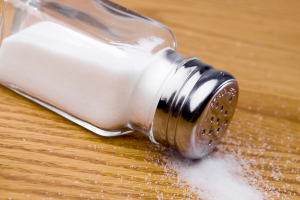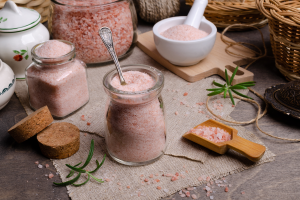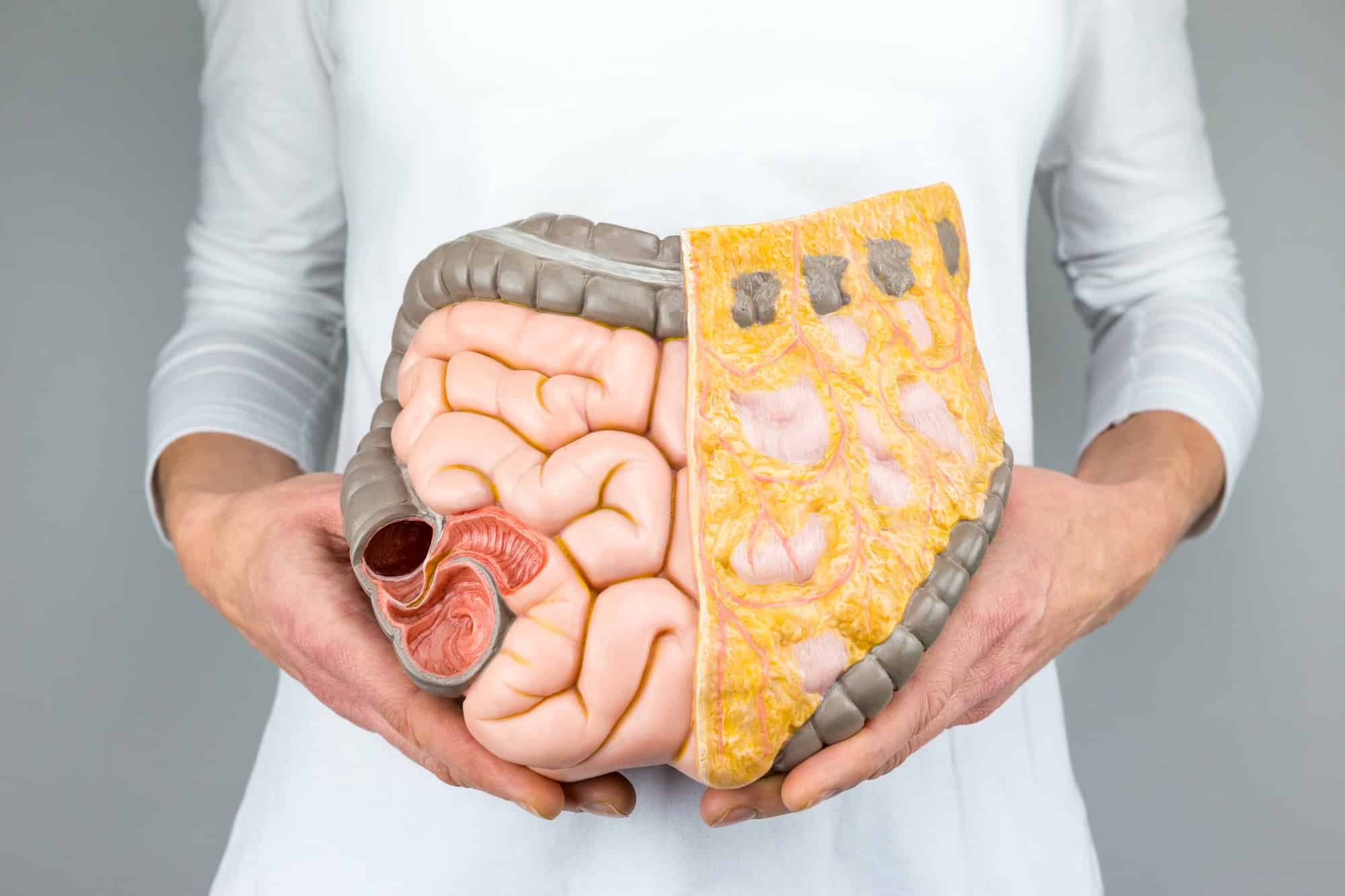How Sodium Affects Your Health (The Good and the Bad)
The words salt and sodium are often used interchangeably, leading many people to assume that they are the same. However, there is a key difference between these two compounds.
Sodium is a dietary mineral and a component of sodium chloride, or salt. So, while salt does contain sodium, it is not the only thing that makes up its composition.
Still, salt remains our number one source of sodium, which makes it important to consume, but dangerous to overdo.
Why We Need Sodium
Sodium is found naturally in some foods and manufactured into various processed foods. The body takes in the sodium it needs and then eliminates the extra in urine or perspiration, which is one reason why your sweat is “salty.”
The general role of sodium is to regulate blood pressure, keep nerve impulses running, and support muscular contraction. All of these roles combine to help cells and organs function as they should. Additionally, sodium is one of the electrolytes that help your body maintain the correct amount of fluids.
Since the body does not produce sodium naturally, it is important to intake enough through your diet.
Health Benefits of Salt
Salt is the general name for sodium chloride, and when you break down table salt, it typically consists of 40% sodium. Salt is also your most significant source of sodium and a very common preservative in food to prolong shelf-life.
If your diet is too low in salt (and thus sodium) you may suffer from low blood pressure, dehydration, and elevated blood fat levels.
In severe cases of sodium deficiency, you could develop hyponatremia, which can cause a medical emergency affecting the brain. Symptoms of this condition include muscle twitches, dizziness, seizures, or even loss of consciousness.
Negative Effects of Too Much Salt
While sodium is important, too much of it can cause health problems. Because of how much salt a typical diet contains, this is often how someone intakes more sodium than their body needs.
Cardiovascular Problems
For most people, problems with too much salt occur from the kidneys’ inability to keep up with the excess sodium, causing sodium to accumulate in the blood.
To combat this, the body often tries to hold onto water to dilute the sodium and bring it to a normal level. However, this then increases the volume of blood in the bloodstream and the amount of fluid surrounding cells. The heart then needs to work harder to pump the extra blood volume, and additional pressure is also placed on the vessels.
Over time, these conditions can cause the blood vessels to stiffen, leading to heart attack, high blood pressure, or stroke.
A study by the Institute of Medicine found that reducing the amount of sodium that you intake lowers blood pressure. Additionally, multiple studies have found that high blood pressure is one of the leading causes of cardiovascular disease, so lowering blood pressure can help to lessen this risk.
Chronic Kidney Disease
Chronic kidney disease shares risk factors with cardiovascular disease, with high blood pressure, in particular, being a high-risk factor for both.
While high sodium intake has not been linked with high blood pressure, a 2014 systemic review did find that those with CKD experienced greater progression of CKD when they consumed a large amount of sodium (4,600 mg or more a day), while those who consumed 2,300 mg or less saw no significant effect.
Osteoporosis
The amount of calcium the body removes through urination is directly related to the amount of salt you consume. So, the more salt you intake, the more calcium you lose. If the body is low in calcium, it may start to pull calcium from your bones, which can cause the bones to thin, a condition called osteoporosis.
Cancer
While research is minimal, there is evidence showing that intaking more salt or sodium is linked to an increase in stomach cancer. Because of these results, the World Cancer Research Fund concluded that salt is a probable cause of stomach cancer.
Differences in Salt Types
There are many different types of salt, which can cause one to wonder what makes them different, and if one is better than the others.
The biggest difference in the salt types is the grain’s size, whether it is pure sodium chloride, and where it is mined from.
Table Salt
 Unlike the other salts in this list, table salt is typically iodized, which means it contains small amounts of potassium iodide or sodium iodide. Similar to sodium, your body cannot make iodine, and by fortifying salt with iodine, you can ensure that you consume enough of this element. Table salt is mined from salt deposits into fine, even flakes.
Unlike the other salts in this list, table salt is typically iodized, which means it contains small amounts of potassium iodide or sodium iodide. Similar to sodium, your body cannot make iodine, and by fortifying salt with iodine, you can ensure that you consume enough of this element. Table salt is mined from salt deposits into fine, even flakes.
Kosher Salt
Kosher salt has large, coarse grains and contains only sodium chloride. It is mined from salt deposits.
Sea Salt
Sea salt is made by evaporating seawater and typically contains trace minerals. It can be white, pink, or gray in color and typically produces uneven flakes.
Flake Salt
Flake salts are created by compressing standard salt crystals to make flat crystals, which are often preferred when cooking.
Himalayan Pink Salt
Himalayan pink salt gets its name from its pinkish tint. It is mined from the Khewra Salt Mine in Pakistan and contains trace minerals in addition to sodium chloride.
Fleur de Sel
Fleur de Sel is a rare form of sea salt harvested in parts of France by collecting the thin layer of salt that rises to the surface of shallow pools along France’s coast.
Flavored Salts
Flavored salts contain salt and a range of spices or herbs to create a flavorful seasoning for your meal. They are a great way to add extra flavoring to your meal, but it is important to watch how much is added to ensure that too much salt is not consumed.
The Verdict: Which is the Best?
While there are many compositions of salt, the best one for you will typically be whatever one is easiest to cook with. They all contain the same components (except for flavored salts), and the iodine added to table salt is generally unnecessary since you typically consume enough iodine from your food.
If you suffer from an iodine deficiency, iodized salt will likely be your best choice. Otherwise, you can choose whichever salt produces the flavor you are looking for (for the purpose you need) without going overboard.
Sodium is an essential part of a healthy body, but it is crucial to ensure that you do not overdo it; otherwise, you may increase your risk of cardiovascular disease, chronic kidney disease, osteoporosis, or cancer.
Limiting how much salt you add to your food can keep your sodium to a healthy level, preserving not just your food, but also your health.
References
World Cancer Research Fund, American Institute for Cancer Research. Food, Nutrition, Physical Activity, and the Prevention of Cancer: A Global Perspective. London; 2007.
Fluid and Electrolyte Balance: MedlinePlus. (2016). Retrieved 9 August 2022, from https://medlineplus.gov/fluidandelectrolytebalance.html
He, F., & MacGregor, G. (2008). A comprehensive review on salt and health and current experience of worldwide salt reduction programmes. Journal Of Human Hypertension, 23(6), 363-384. doi: 10.1038/jhh.2008.144
Smyth, A., O’Donnell, M., Yusuf, S., Clase, C., Teo, K., & Canavan, M. et al. (2014). Sodium Intake and Renal Outcomes: A Systematic Review. American Journal Of Hypertension, 27(10), 1277-1284. doi: 10.1093/ajh/hpt294
Tiyasatkulkovit, W., Aksornthong, S., Adulyaritthikul, P., Upanan, P., Wongdee, K., & Aeimlapa, R. et al. (2021). Excessive salt consumption causes systemic calcium mishandling and worsens microarchitecture and strength of long bones in rats. Scientific Reports, 11(1). doi: 10.1038/s41598-021-81413-2
Stomach cancer | What causes stomach cancer? | WCRF International. (2022). Retrieved 9 August 2022, from https://www.wcrf.org/diet-activity-and-cancer/cancer-types/stomach-cancer/
Low blood sodium: MedlinePlus Medical Encyclopedia. (2022). Retrieved 9 August 2022, from https://medlineplus.gov/ency/article/000394.htm
You Might also Like























